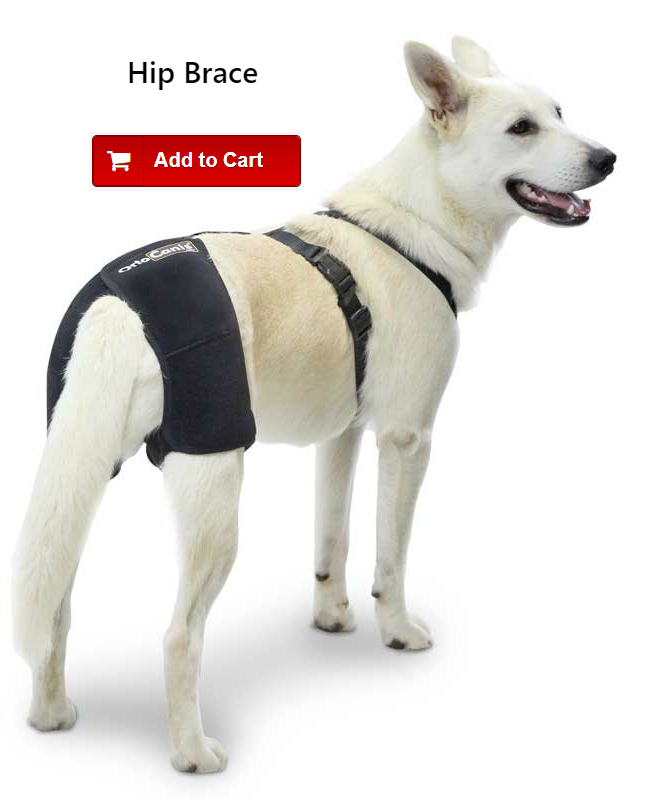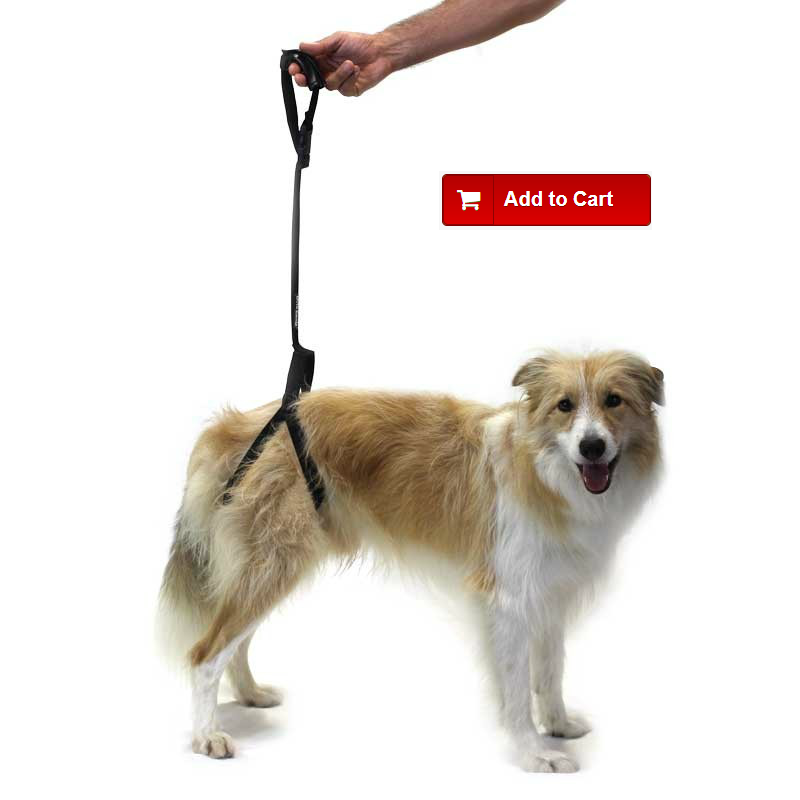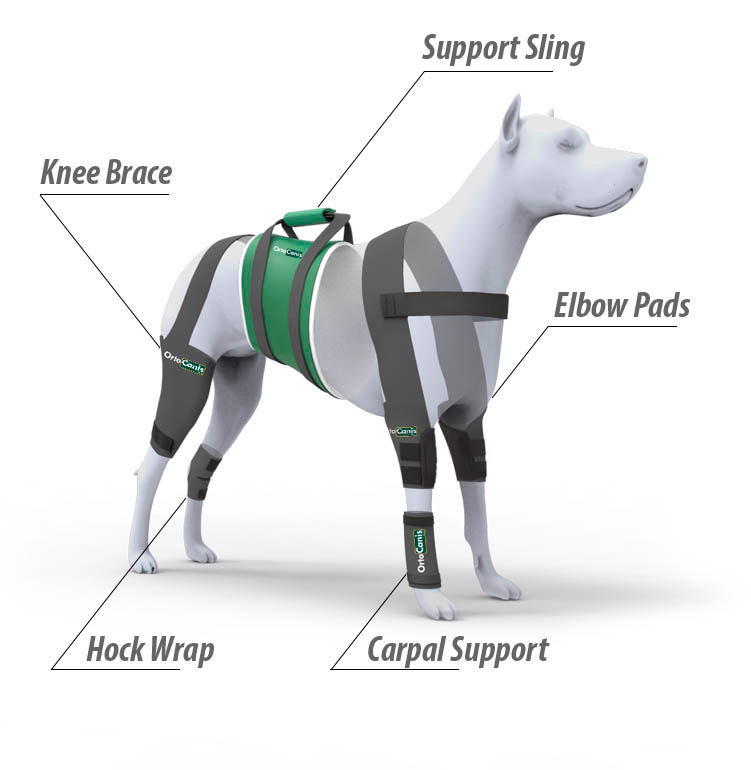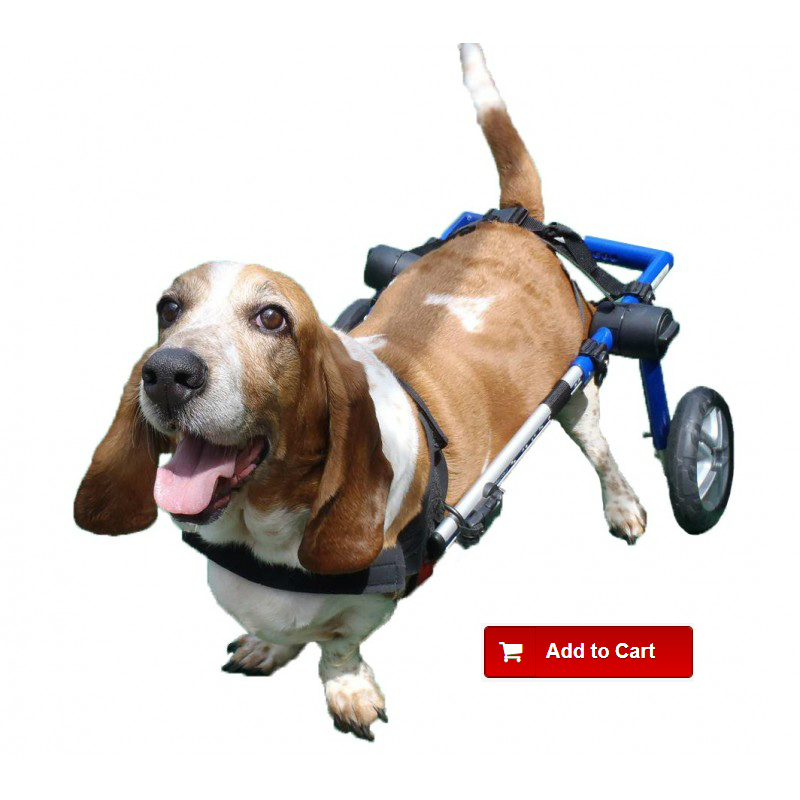A dog’s inability to stand their rear legs or rear limb lameness (claudication) can have many causes. The weakness is not always a result of old age and in many cases receiving early, adequate treatment can improve the problem.
The symptoms most frequently seen in an animal with problems with their hind legs are: weakness, difficulty getting up and standing, tendency to cross the back legs while walking, running with both legs parallel (like a rabbit), slipping more than often and uncoordinated movements.
Despite how it seems, the causes of limpness are not always muscular or skeletal and as such, it is essential to visit the vet for a diagnosis. In general, the most common causes are:
- Pain, in the affected area or not
- Orthopedic problems
- Neurological problems
- Systemic problems affecting the animal’s entire body, like in the case of some endocrine disorders (hormonal or glandular)
Age is important. With young animals we suspect that there is a malformation or some other congenital illnesses while with older animals we suspect there is a herniated disc o tumor. The genetic tendency of some illnesses is also very important, for example, hip dysplasia in Labrador Retrievers or Degenerative Myelopathy in German Shepards. You can check out the statistics on the prevalence of dysplasia based on breed, for example.
There are also predisposing factors to having problems in the hind legs, such as obesity, diabetes or excessive feeding in puppies.
 It’s also important to inform the vet if the problem is an acute alteration (fast and intense onset) or chronic (slow and progressive onset), since this could really help the diagnosis.
It’s also important to inform the vet if the problem is an acute alteration (fast and intense onset) or chronic (slow and progressive onset), since this could really help the diagnosis.
Rear limb lameness (claudication) is more common in older, larger-breed animals, usually caused by hip dysplasia, osteoarthritis, herniated discs and problems in the lumbosacral area.
Possible causes are: Degenerative Myelopathy, meningomyelitis, diskospondylitis, hemivertebra, neoplasms (tumors), cysts, fibrocartilaginous embolism (secondary to fractures), aortic tromboembolism, hyperadrenocorticism or Cushing Syndrome,… as you can see the causes are diverse and some of them quite serious, so it’s very important to see your vet if you notice any symptoms.
Treatment obviously will depend largely on the cause of the claudication. 
The first thing to try is to address and fix the cause, to the extent possible. For example: if a herniated disc is causing the weakness, first you should try and stabilize the disc, either by surgery or bandaging and rest (depending on the case), because if not, regardless of whether we give the animal an anti-inflammatory and a comfortable bed resulting in the animal feeling better, we won’t have solved the problem (rather just the opposite).
Once the main cause has been treated, we have a wide range of aids that can improve the animal’s quality of life: the use of orthopedic beds is especially indicated for those cases with a joint condition (hip dysplasia, osteoarthritis, hernias…) since it enables the animal to distribute its weight throughout all of its body surface and not only on the joints. The chondroprotectors are also indicated for any joint condition, seeing as they help to slow down the progression of osteoarthritis. Anti-inflammatories have a fundamental role in pain management. In very old dogs they can be contraindicated if there are natural anti-inflammatories with fewer side effects.
In the cases where the weakness is caused by a decrease in muscle mass, it’s very important to provide rehabilitation so that gradually the animal can regain its normal rhythm. The use of wheelchairs is interesting from a body and mind point of view, as it enables the animal to walk on its own and be independent.
The use of rear support harnesses also help animals with weakness in the rear limbs. The owner supports some of the animal’s weight so that it’s easier for them to move. The majority of animals also benefit from non-slip boots, which reduce the effort required to stand up and allow for a less demanding support, which helps to stabilize the animal.
 As you can see, the causes and possible treatments for dogs with weakness in the hind legs are many. You should always consult with your vet at the onset of the first symptoms. An early diagnosis and thorough knowledge of all therapeutic alternatives can mean a significant improvement for the animal’s prognosis.
As you can see, the causes and possible treatments for dogs with weakness in the hind legs are many. You should always consult with your vet at the onset of the first symptoms. An early diagnosis and thorough knowledge of all therapeutic alternatives can mean a significant improvement for the animal’s prognosis.

